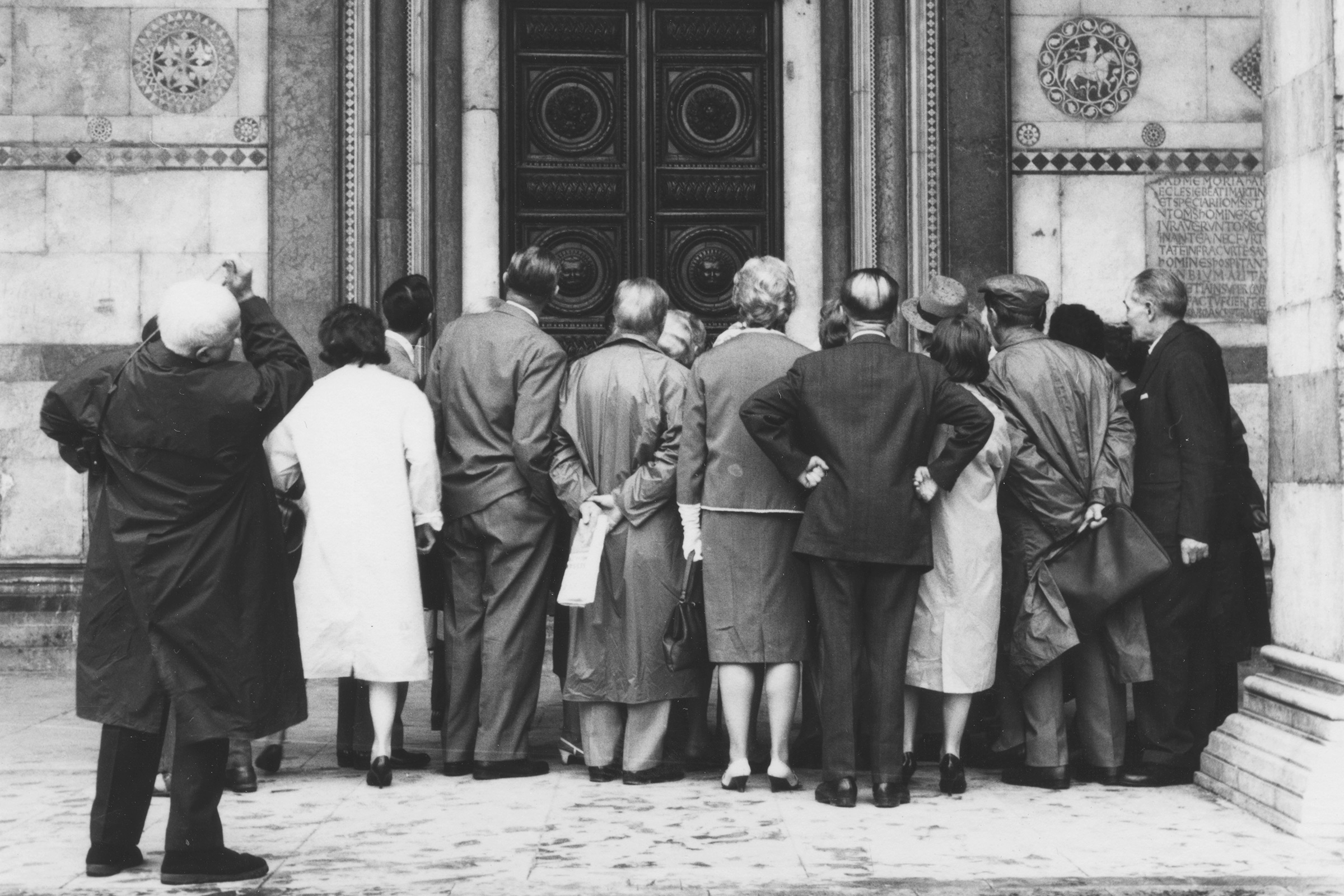
Viva l’Italia
by Chiara Ruberti
Location: Palazzo Guinigi, Via Guinigi, 29
Opening days and hours:
Monday – Thursday from 15:00 to 19:00
Friday – Sunday from 10:00 to 19:00
The image of Italy has always oscillated between the stereotype of the Bel Paese and the complexity of the real country, between the myths and ghosts of the past and desires for the future, between stories and History. Vernacular photography can provide an extraordinary contribution to the representation of the landscape and society of Italy over the last one hundred and fifty years. On the one hand, it helps consolidate traditional visual patterns, while on the other, it offers a unique and unrepeatable glimpse into the intimate and collective life of Italians. This selection of images takes advantage of the rich polysemy of vernacular images from the Fortepan Archive, which Photolux is helping to enrich with research in local and national public and private archives. Most of the materials collected so far come from the photographic collections of the Archive of the Province of Lucca and the Diocesan Library of Lucca “Mons. Giuliano Agresti”, as well as private archives and family albums. The exhibition reconstructs an unpublished geography of Italy, where the threads of the distant and recent past are intertwined and places and stories are connected in a narrative freely inspired by Viva l’Italia, one of Francesco De Gregori’s most famous songs. Published in 1979, it tells the story of the feeling that in the singer-songwriter’s perception was sweeping across the country at the time and which still seems alive today, forty-five years later and in its perpetual harmony of contradictions.
FORTEPAN
Fortepan Method is a project realised in collaboration with the Summa Artium Foundation in Budapest (Hungary) and the Fotofestiwal Lodz (Poland), with the support of the Creative Europe programme of the European Union. The aim of the project is to extend the collections of the Fortepan Archive – which was born twelve years ago in Budapest (www.fortepan.hu), from the discovery of a plastic bag full of anonymous photographs in a dumpster, and which today counts more than 175,000 photographs – and to create an international platform (www.fortepan.eu) that tells the story of Europe, from the invention of photography to 1990. The story of everyday life, of places and cities, of streets and houses, in the shadow of the major political events that spanned the last century in an archive accessible to all, where photographs are available under a Creative Commons licence and can therefore be viewed, used and printed freely by all users of the platform.



